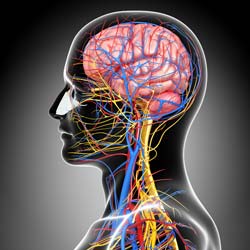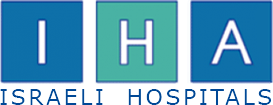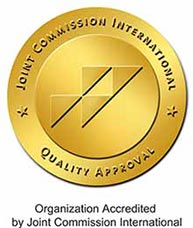Surgical Treatment of Epilepsy

Specialization: Neurosurgery, pediatric surgery
Epilepsy is a malfunction of the brain’s electrical system. When drug therapy has been tried and was found not effective, epilepsy surgery is an option. An operation on the brain can control seizures and improve your quality of life. Rambam Hospital offers surgical treatment for children and adults. The road map for treatment is compiled on an individual basis, taking into account the age of the patient, since the course of epilepsy in children and adults can differ significantly.

Prof. Moni Benifla, an epilepsy and pediatric neurosurgeon at Rambam hospital explains what happens during epileptic seizures: “Instead of transmitting and receiving messages in short, controlled bursts of electrical energy, brain cells begin firing wildly and continuously. This creates a tsunami of energy surging through part or all of the brain that brings on an epileptic seizure."
A number of high end surgery techniques can alleviate seizures. In terms of freedom from seizures, studies found surgery to be superior to medical treatment. When properly selected, 85% percent of those who undergo surgery are cured.
“To identify the culprit brain tissue, we record the patient’s seizures over several days, simultaneously by video camera and by EEG," says Prof. Benifla. “We then compare the videotape, the EEG trace and an MRI of the patient’s brain. If all point to the same abnormality, we’ve pinpointed the epileptogenic zone, the place where the seizures are generated, and the patient is a good candidate for surgery.”
What's the Process of Surgical Treatment of Epilepsy in Rambam Hospital?
Rambam Hospital employs a variety of surgical techniques to treat epilepsy. To increase the accuracy and effectiveness of surgical intervention, the operation is carried out under the control of electrocorticography, which monitors the functioning of the brain. This helps to track the activity of the brain and to determine the boundaries of the epileptogenic focus as precisely as possible.
Rambam Medical Center's department of pediatric neurosurgery is equipped with the latest medical equipment, including progressive systems of neuronavigation. That enables the hospital's surgeons to work with areas of the brain that were previously inaccessible due to the high risk of postoperative complications.
If the symptoms of epilepsy are caused by compression of brain tissue by a growing neoplasm, such as arteriovenous malformation, cavernous angioma or heterotopia, surgical removal of the anomaly allows coping with severe manifestations of the disease. After the operation, the patient is sent to the intensive care unit, where he or she remains overnight, under continuous monitoring by medical personnel. In the absence of complications, the patient is transferred to the surgery department, where doctors monitor his or her condition for about a week. Typically, up to 80% of patients experience an improvement or complete disappearance of symptoms.
What Types of Surgeries Are Used to Treat Epilepsy?
Temporal lobectomy
The procedure involves the removal of the anterior temporal lobe of the brain. This highly effective surgical intervention is most often performed at an early age.
Hippocampectomy
This is a resection of the structure of the brain located in the medial region of the temporal lobe of the brain. Both operations are considered appropriate in the epileptogenic focus in the temporal lobe and in case of hippocampal sclerosis. In some cases, they are carried out simultaneously to improve the effectiveness of surgical treatment. Usually, more than 75% of cases are a success and experience recovery.
Resection of epileptogenic foci
During the operation, the surgeon cuts out the portion of the cerebral cortex in which pathological eclectic activity was detected. The patient arrives at the hospital the day before the scheduled operation. Surgical intervention is carried out under the control of electrocorticography. On average, the whole procedure takes no more than four hours. As a rule, the patient stays at the hospital for no longer than 3-5 days.
Corpus Callosotomy
The corpus callosum is a combination of the nerve fibers of the brain. It is one of the main structures that connect the right and left hemispheres. By dissecting the corpus callosum, the surgeon disrupts the conduction pathways of nerve impulses between the two parts of the brain, thus reducing the severity of epilepsy symptoms. Corpus callosotomy is recommended when general symptoms of the disease are present, in particular if the patient experiences tonic attacks characterized by a sudden fall. When corpus callosotomy is performed, the patient is usually kept at the hospital for 3-6 days.
Hemispherectomy
This operation is performed to treat one of the most frequently diagnosed forms of epilepsy, when the epileptogenic focus affects one of the hemispheres of the brain. To achieve a better result, the operation is best done before the patient is 8 years old. The surgeon's goal is to interrupt the way in which anomalous electrical impulses are transmitted from one hemisphere of the brain to the other. Unlike callosotomy, this operation completely stops interhemispheric contacts.
Hemisferectomy is a complicated surgery and it's recommended only when the patient suffers from especially severe and extremely resistant to the traditional treatment of neuropathology, which is called Rasmussen's encephalitis. After the surgery, the patient is hospitalized for about 10 days if there aren't any complications.
Multiple subpial transection
This operation is recommended when the epileptogenic focus is located in the functionally important area of the brain and there is a high risk of its damage during the manipulation of the surgeon. In order to reduce symptoms, the surgeon makes small incisions around the pathogenic zone to reduce the spread of abnormal impulses to other areas of the brain. After the operation, the patient is hospitalized for 5 days.
Vagus Nerve Stimulator (VNS) Implantation
This operation is designed to reduce the symptoms of the disease in patients with multiple pathological lesions scattered throughout the surface of the cerebral cortex. Nervous stimulant is designed to control the conductivity of the vagus nerve, which helps to prevent epileptic seizures that are not stopped by medication.
More than half of the patients who received treatment in Israel experienced a significant reduction in the number and severity of seizures. Surgical treatment is the only effective alternative for patients who do not respond to conservative therapy.
We will prepare a treatment proposal for your condition.








